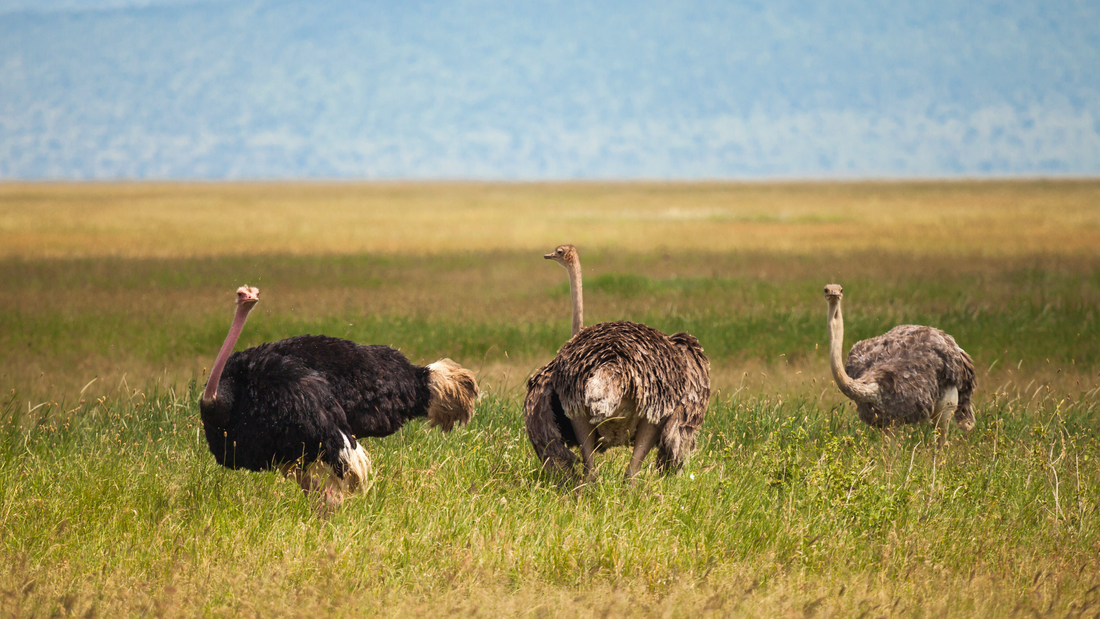
A Guide to Different Ostrich Species: Unique Characteristics and Commercial Significance
Share
The Ostrich -- these magnificent flightless birds known for their impressive height and powerful legs, encompass a variety of species with distinct characteristics and commercial value. In this blog post, we will explore the fascinating world of ostriches, focusing on five key species: the Common Ostrich, South African "Black" Ostrich, Somali "Blue-Necked" Ostrich, North African "Red-Necked" Ostrich, and Masai Ostrich. Diving into their unique attributes and commercial applications, we'll discover the diverse contributions each species makes to the meat, feathers, eggs, and other ostrich byproduct industries.
Common Ostrich (Struthio camelus)
The Common Ostrich, scientifically known as Struthio camelus, is the most well-known and widely distributed species. With its impressive height and powerful legs, this species is native to Africa and exhibits remarkable adaptability. From a commercialization perspective, Common Ostriches are the primary source of meat, feathers, eggs, and other valuable byproducts.
South African “Black” Ostrich (Struthio Camelus Australis)
The South African Ostrich, scientifically known as Struthio camelus australis, is a species found in South Africa. It is smaller in size and stature in comparison to the Common Ostrich and has distinct black legs and neck. From a commercial standpoint, South African Black Ostriches are commonly farmed for eggs, meat, leather, and feather products.
Somali “Blue-Necked” Ostrich (Struthio molybdophanes)
The Somali Ostrich, scientifically known as Struthio molybdophanes, is a species found in Eastern Africa. It is slightly smaller than the Common Ostrich and has distinct blue-grey legs and neck. From a commercial standpoint, Somali Ostriches are not as extensively utilized for meat production compared to their Common counterparts. However, their feathers and other byproducts are still valuable in various industries.
North African “Red-Necked” Ostrich (Struthio camelus camelus)
The North African Ostrich, a subspecies of the Common Ostrich, inhabits the desert regions of North Africa. It is similar in appearance to the Common Ostrich but exhibits adaptations to arid environments. From a commercialization perspective, this subspecies contributes to the meat and byproduct industry, albeit to a lesser extent than the Common Ostrich.
Masai Ostrich (Struthio camelus massaicus)
The Masai Ostrich, another subspecies of the Common Ostrich, is found in East Africa. It is the largest of all ostrich species, characterized by its impressive size and vibrant plumage. From a commercial standpoint, Masai Ostriches are predominantly utilized for their feathers, which are highly sought after in the fashion and decorative industries.
By exploring the various ostrich species and their unique characteristics, we hope to provide you with a comprehensive understanding of their genetic attributes and economic significance to the meat and byproduct industries.
